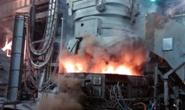Scrap Prices North America

Midwest Ferrous Scrap Pricing Slow to Develop, Expect Sideways Price Movements
Written by John Packard
April 7, 2015
Our scrap sources are advising Steel Market Update that the scrap markets in the Midwest have been slow to settle with only a few deals done as of Tuesday morning. The expectation by those involved in the Midwest ferrous scrap markets is that the transactions will be completed over the next day or two. Most involved in the industry are expecting sideways movement of scrap prices for the month of May.
There continues to be an over abundance of prime grades (busheling and bundles) and our sources tied to the Detroit market are advising their prices on primes could be down $5 while everything else is expected to move sideways. As of this morning, Detroit trading had not yet been completed.
![]() From the East Coast we heard from one of our scrap sources who advised us that the east and the south have been the strongest markets so far this month:
From the East Coast we heard from one of our scrap sources who advised us that the east and the south have been the strongest markets so far this month:
“Markets appear to be settling at sideways prices for the most part. The Chicago district appears to be the weakest as demand there continues to wane. The OH Valley was weak as well, and some of the trading in that area remains to be completed. The east and south were the most solid as a lack of obsolete scrap supply seemed to outweigh slightly the reduced demand. Busheling and bundles remained the most plentiful grades as mills which normally buy those grades were out of the market this month. With that said, DJJ continued to buy prime grades despite importing both shredded and prime grades from overseas.
“Pricing in the east was $260/GT for shred, $230-35/GT for HMS and $250/GT for P&S. Prices were similar down south though shred was fetching $265-70/GT to some mills.
“My sense is that from here we could trend down a bit as spring flows improve supply. There is nothing to indicate demand is going to improve next month, though it will improve at some point once the finished steel destocking gets further along. It¹s hard right now to figure out exactly when that will be. But May is a month away and if my inflows are any indication, it¹s not going to be easy to fill the orders I¹ve taken this month.”
May Outlook
As we look further out into May and June, scrap prices will be tied to how much scrap is available (in-flows) to sell as those collecting automobiles and large demolition jobs try to hold back scrap in the hope of collecting higher prices. Obsolete scrap in-flows are expected to improve which would pressure prices.
The U.S. dollar is also expected to remain quite strong which impacts the exports of scrap. The expectation is for exports off the east coast to be relatively limited, which pushes excess scrap into the mid-Atlantic and Ohio Valley areas thus pressuring prices.
Service centers continue to adjust inventories and limit buys from the domestic steel mills. We will have to watch April inflows but at 3.7 million tons for February and March looking like 3.5 million tons there continues to be a glut of foreign steel arriving which is slowing the distributors’ progress of relieving those excess inventories. SMU believes it will be another one to two months before we see order patterns improve enough to affect the order books at the domestic steel mills.
Meanwhile, domestic steel prices continue to be under pressure (despite our Neutral rating) as the industry attempts to “right-size” production with demand. With EAF mills running less than their full complement of furnaces (EAF’s) and US Steel and ArcelorMittal having announced intentions to take down as many as six blast furnaces (with a number already having been idled) we expect pressure on supply coming over the next 30 to 60 days.

John Packard
Read more from John PackardLatest in Scrap Prices North America

HRC vs. scrap spread widens over $150/ton in March
The HRC vs. prime scrap spread increased again in March.

HRC vs. prime scrap spread increases in February
The price spread between hot-rolled coil (HRC) and prime scrap widened in February ahead of the implementation of President Trump’s tariffs on steel.
HRC vs. prime scrap spread narrows again in January
The price spread between hot-rolled coil (HRC) and prime scrap continued to narrow in January, according to SMU’s most recent pricing data. While SMU’s average HRC price edged down week over week (w/w), it rose compared to a month ago. The January price for busheling also increased from December. Our average HRC price as of […]

HRC vs. prime scrap spread flat in November
The price spread between hot-rolled coil (HRC) and prime scrap remained the same in November as both tags were at the levels seen a month earlier, according to SMU’s most recent pricing data.

HRC vs. busheling spread narrows slightly in October
The price spread between hot-rolled coil (HRC) and prime scrap narrowed marginally in October, according to SMU’s most recent pricing data.
